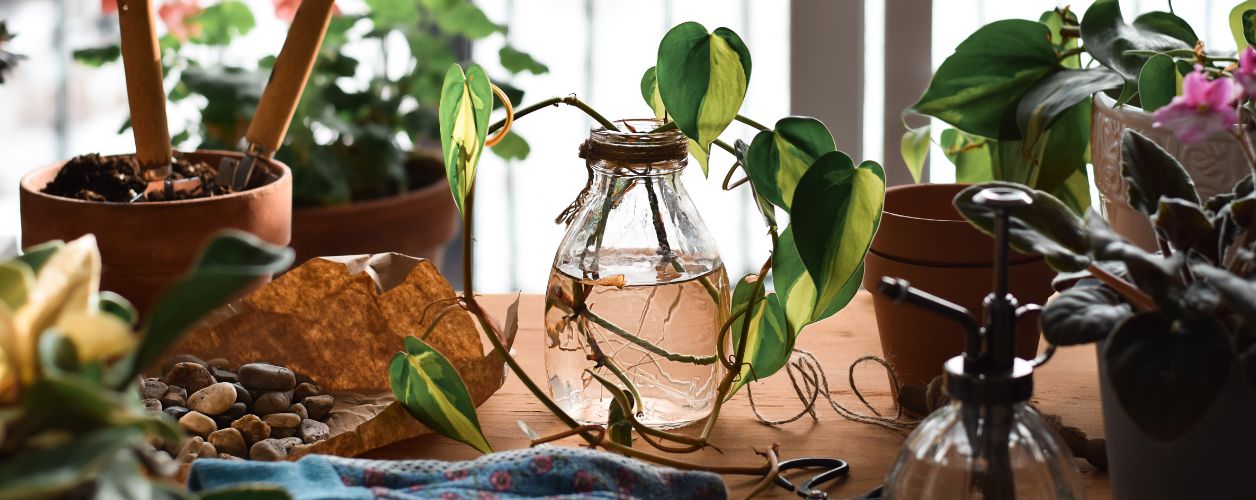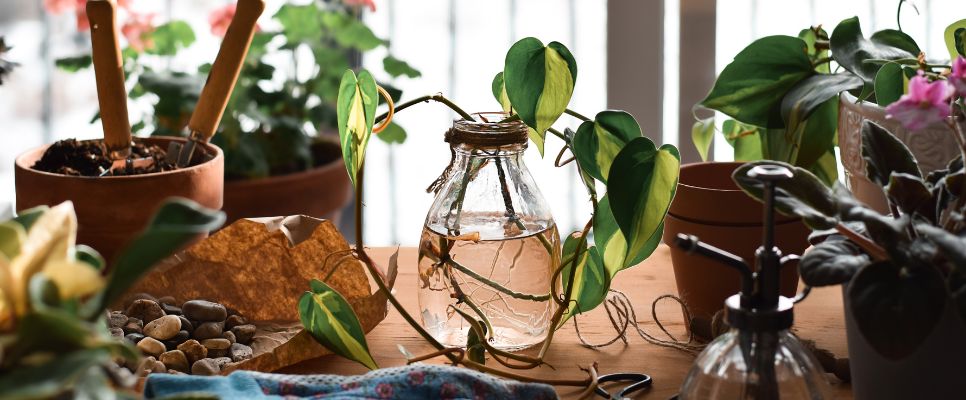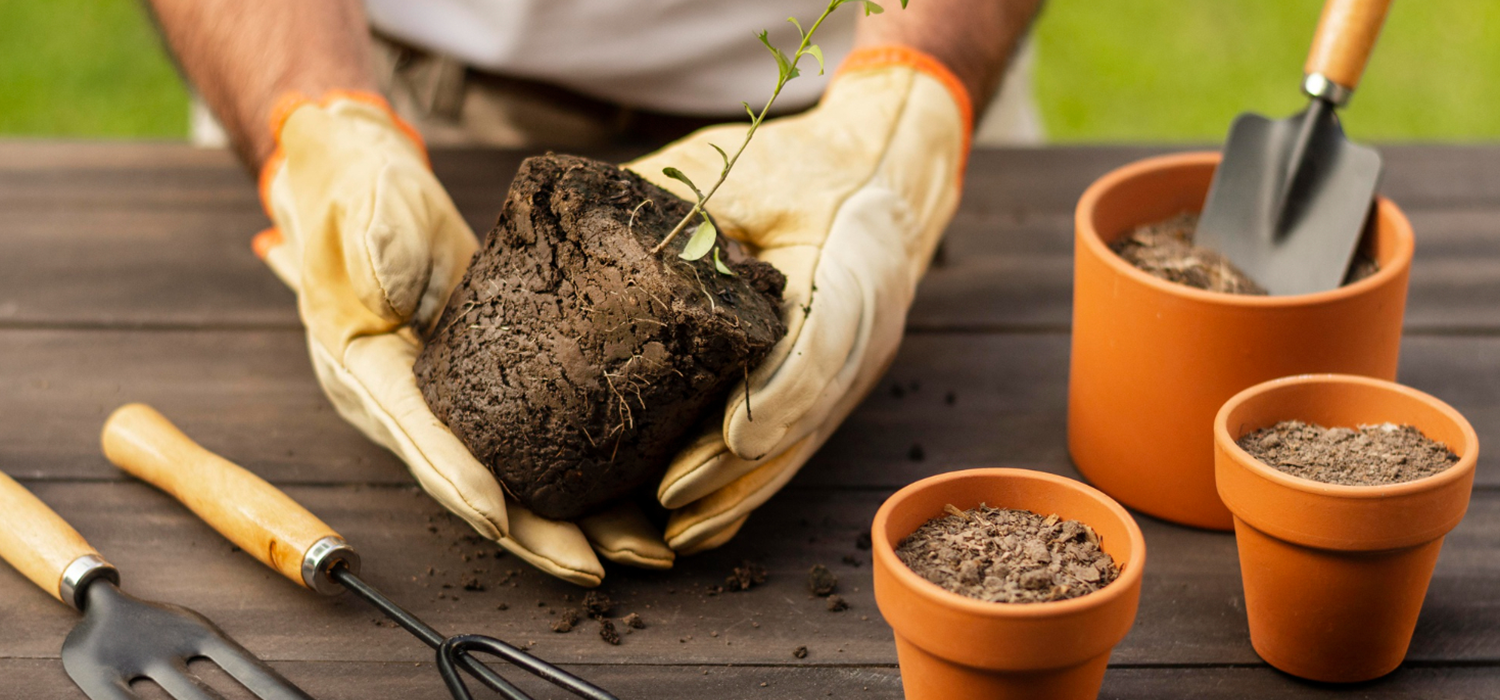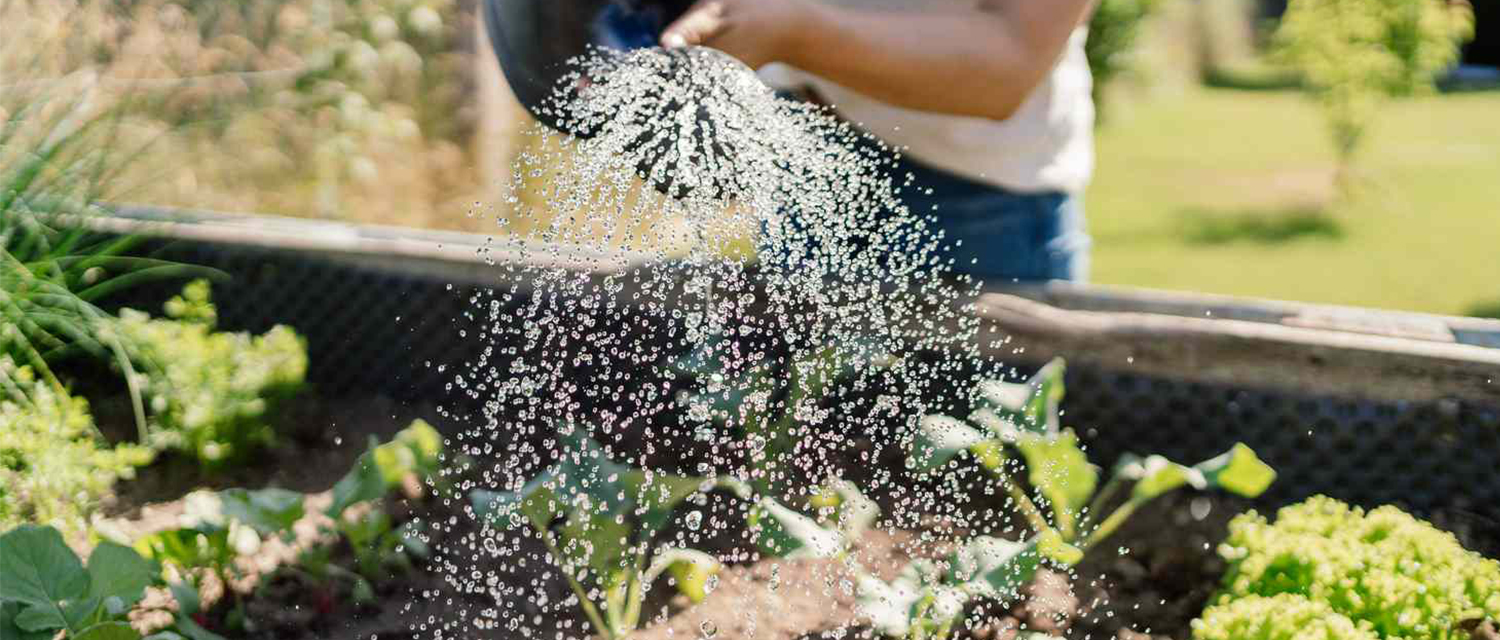Get free quotes within minutes
Best Plants That Grow from Cuttings: Easy Propagation Guide

Table Of Content
- Introduction
- Why Grow Plants from Cuttings?
- Types of Cuttings
- Best Plants That Grow from Cuttings
- How to Propagate Plants from Cuttings?
- Common Cutting Propagation Problems and Solutions
- Organic Ways to Boost Root Growth
- Best Containers for Rooting Cuttings
- Conclusion
Best Plants That Grow from Cuttings: Easy Propagation Guide
Plant propagation is one of the most rewarding gardening techniques, allowing enthusiasts to grow new plants from existing ones with minimal effort and expense. Among the many propagation methods, growing plants from cuttings is particularly popular because it ensures genetic consistency with the parent plant while speeding up the growing process. Whether you are a beginner or an experienced gardener, mastering this technique can help you expand your garden effortlessly.
By using stem, leaf, or root cuttings, you can successfully propagate a wide variety of plants, from ornamental flowers to hardy shrubs and even fruit-bearing trees. Unlike growing from seeds, which may result in variations, propagation from cuttings guarantees that the new plants will retain the desirable traits of the original, including colour, shape, and disease resistance. With the right approach and proper care, many plants establish strong root systems and thrive in their new environment.
This guide will walk you through the best plants that grow from cuttings, offering an easy-to-follow propagation process for each. Whether you're looking to cultivate vibrant houseplants, enhance your outdoor garden, or share cuttings with fellow plant lovers, understanding the right techniques will set you up for success. Let’s explore the easiest and most reliable plants to propagate, making your gardening journey even more enjoyable.
Why Grow Plants from Cuttings?
Cuttings have gained wide popularity in plant propagation due to various compelling factors.
- Cost-effective: The method enables you to save costs since you do not need to purchase seeds or new plants.
- Faster growth: New plants that originate from cuttings reach maturity faster than seed-planted specimens do.
- Cloning effect: Through the cloning effect, the new plants maintain all the existing characteristics of their parent plant.
- Sustainability: Sustainable practices are achieved by reclaiming plant materials used for propagation.
New propagators need not stress about this process. This instructional piece lists the ideal plants that respond well to cutting methods before providing systematic guidance for completing the process.

Types of Cuttings
The fundamental knowledge about propagation cuttings becomes essential before studying individual plant species.
- Stem Cuttings are the dominant propagation method since they originate from the stem section of a main plant.
- Some species reorganize plants through regenerating from simple leaf sections.
- Root sections known as root cuttings can produce entirely new plants.
The propagation speed of cuttings depends on whether they represent softwood or hardwood sections, since softwood pieces develop roots faster than hardwood sections require prolonged establishment time.
Our following segment focuses on discussing some user-friendly plants that generate successfully from cuttings.
Best Plants That Grow from Cuttings
Best Indoor Plants for Propagation
- Pothos (Epipremnum aureum)
Stem cuttings of Pothos represent one of the most accessible propagation methods because the plant remains easy to grow. You need a stem section including at least one node between leaf and stem, which you should then position in a water container. Plantings in water will generate roots within several weeks before going into the soil. - Spider Plant (Chlorophytum comosum)
The propagation of spider plants involves cutting "pups" from the parent plant since this method presents a very easy level of difficulty. Because these pups become rooted rapidly, the plant works as a straightforward alternative for starting gardeners. - Snake Plant (Sansevieria trifasciata)
Snake plant leaf cuttings require moderate difficulty to succeed since gardeners should cut healthy leaves into sections, then position them upright in the planting soil with moderate moisture. The soil needs to remain slightly moist throughout a few weeks, where new shoots will eventually appear.
Best Herbs to Grow from Cuttings
- Rosemary (Rosmarinus officinalis)
Softwood cuttings of the fragrant Rosemary produce excellent results due to its natural capacity to root easily. You need only cut a 4-inch section from the plant, then remove its lower leaves to grow it successfully either in water or soil. - Basil (Ocimum basilicum)
The fast rooting ability of basil cuttings occurs when placed in water. When you stick a fresh cutting into water, it will develop roots quickly during the following days. - Lavender (Lavandula spp.)
Stem cuttings of Lavender during spring represent the propagation method with moderate difficulty. The cuttings need dry and warm soil in which to grow, along with regular humid treatment. - Mint (Mentha spp.)
The propagation method of stem cuttings for mint is both simple and very easy since this herb has a natural tendency to spread quickly. The chosen healthy plant stem requires placement in water until root development occurs.
Best Ornamental and Garden Plants for Propagation
- Geraniums (Pelargonium spp.)
Geranium propagation through stem cuttings shows easy success rates when planted straight into the growing medium. Trim away the bottom leaves before inserting the cutting into dry soil with good drainage properties. - Fiddle Leaf Fig (Ficus lyrata)
The propagation of fiddle leaf fig cuttings becomes possible through water or soil methods under suitable humidity conditions, although it demands considerable waiting time. - Aloe Vera (Aloe barbadensis miller)
Aloe vera produces its propagating baby plants (pups) inside the base area of its structure. The new pot provides the perfect environment to grow these removed pups.
How to Propagate Plants from Cuttings?
Step 1: Gather Materials
- Sharp scissors or pruning shears
- A clean container (for water propagation)
- Well-draining soil (for soil propagation)
- Rooting hormone serves as an optional ingredient, which increases the growth of new roots, but it is not mandatory.
Step 2: Take the Cutting
- Select a disease-free stem section that has no flowers.
- Trim each cutting right above a node section (stem cuttings require this specific point).
- Cutting propagation requires removing lower leaves since they may cause rot problems.
Step 3: Root the Cutting
- The cutting should be set inside a glass with water while changing the liquid every few days.
- Place the cutting into the prepared moist soil while keeping it under indirect lighting.
Step 4: Provide Proper Care
- Maintain the cuttings in a warm environment that also stays humid.
- Sun exposure should be avoided for the plant until it develops a proper root system.
- When roots show good development, transfer the plant to its permanent growing location.
Common Cutting Propagation Problems and Solutions
- Cuttings Wilting: High humidity can be developed through placing a plastic bag over the plant.
- No Root Growth: Rooting hormone application combined with warm environmental conditions should be used for success.
- Mold or Rot: To rectify overwatering and poor air circulation issues, you need to avoid excessive watering and provide properly ventilated conditions.
Organic Ways to Boost Root Growth
Plants need their roots to develop healthily to become strong and thriving. Organic propagation practices protect plant sustainability while boosting plant strength in both cutting propagation and established plant care. Several natural methods exist that help increase root development.
Use Rooting Hormones from Natural Sources
- The extraction of root-stimulating auxins from willow branches can be achieved by placing the branches in water.
- You can use honey as both a root-promoting substance and an antibacterial agent to stop decay.
- As a natural fungicide, cinnamon supports the development of healthy roots in plants.
Encourage Mycorrhizal Fungi
- The beneficial fungi form mutual partnerships with roots to improve their nutrient uptake ability.
- Use mycorrhizal inoculant both by applying it to the ground soil and by soaking cuttings in natural mycorrhizal powder before planting starts.
Provide Nutrient-Rich Soil
- The soil requirements include either compost or an organic potting mix containing essential plant nutrients.
- Using banana peels and eggshells will help provide the necessary calcium and potassium for strengthening roots.
- The diluted seaweed extract solution will help cuttings develop new roots more quickly.
Maintain Optimal Moisture Levels
- The growing medium should remain moist all the time except being submerged in water.
- Apply mulch to handle both water retention and climate control in the soil.
- Regular misting of cuttings should be performed to stop dehydration.
Utilize Aloe Vera Gel
- Natural root development occurs through the enzymes and nutrients found in aloe vera.
- Fresh aloe gel serves two purposes: direct dipping of cuttings before planting, or adding it to water for soaking cuttings.
Use Organic Rooting Media
- The combination of Perlite and vermiculite, and coconut coir creates an optimal environment with both air capability and efficient drainage.
- The combination of sand and peat moss serves as an ideal medium that keeps moisture while allowing proper ventilation.

Best Containers for Rooting Cuttings
The selection of containers determines the success of propagation operations. Several outstanding choices exist for propagation, which include:
- Glass Jars or Clear Cups
The transparency of these containers enables proper observation of developing roots during water-based propagation. Mason jars or recycled glass bottles should be small in size for effective propagation. - Biodegradable Pots
The propagation process succeeds when using biodegradable pots produced from coconut coir and peat alongside paper materials. The entire planting pot should be placed into the soil to avoid disturbing the roots. - Plastic or Terracotta Pots with Drainage Holes
A small pot with a 2” to 4” diameter and drainage features prevents water saturation. The flow of air to the roots passes better through terracotta than plastic containers. - Seedling Trays or Plug Trays
Seedling trays serve two functions: increasing cutting production numbers and maintaining organized cuttings when they grow in large numbers. The root development requires proper drainage along with sufficient air circulation.
Conclusion
Treating garden propagation by cuttings allows gardeners to increase their plant collection without spending a lot of money. These easy-to-grow plants maintain their health by needing little care, therefore they are suitable for home gardening enthusiasts of houseplants and herbs, and garden shrubs. The process of planting cuttings will lead to a beautifully grown garden that you can create by testing different plants.













